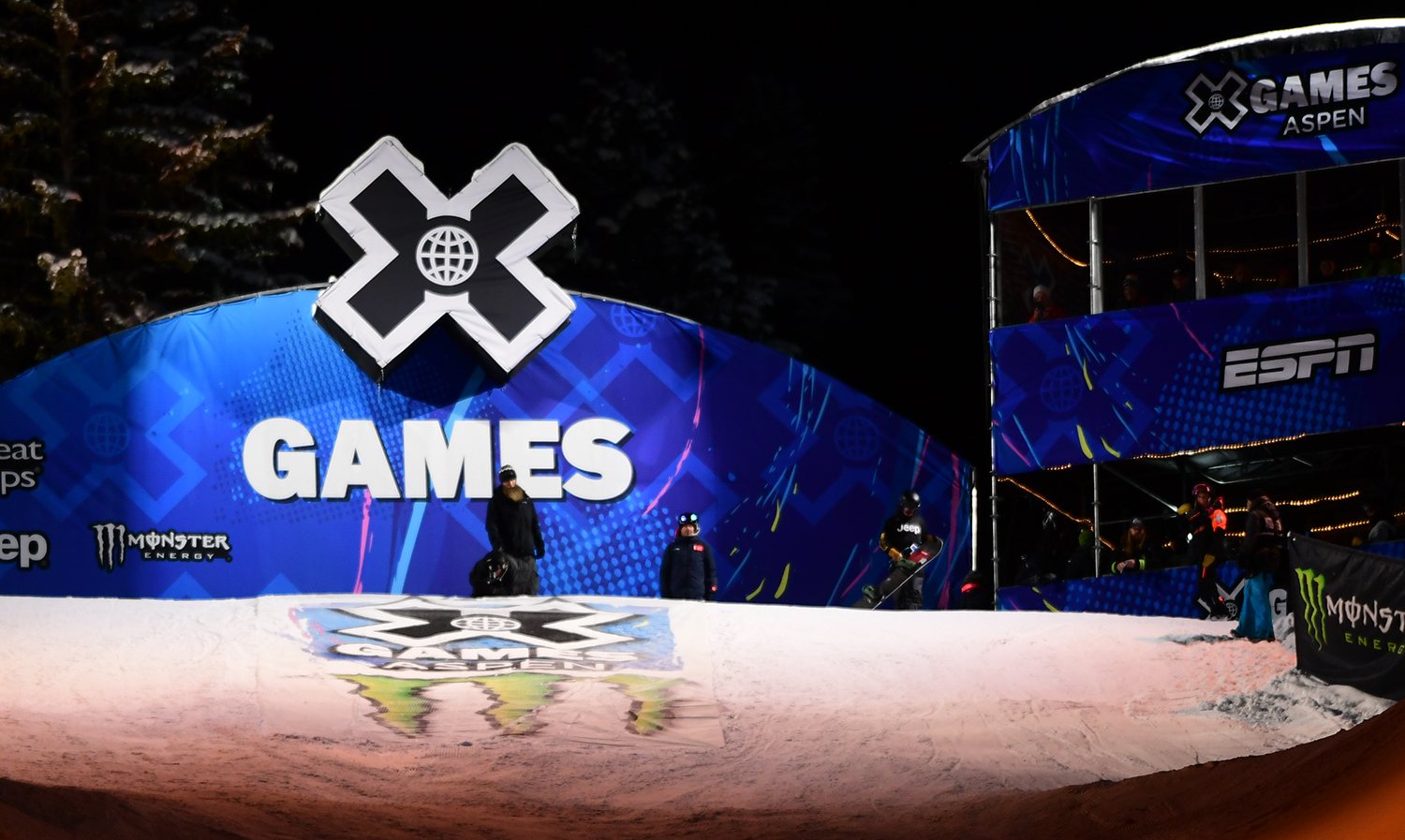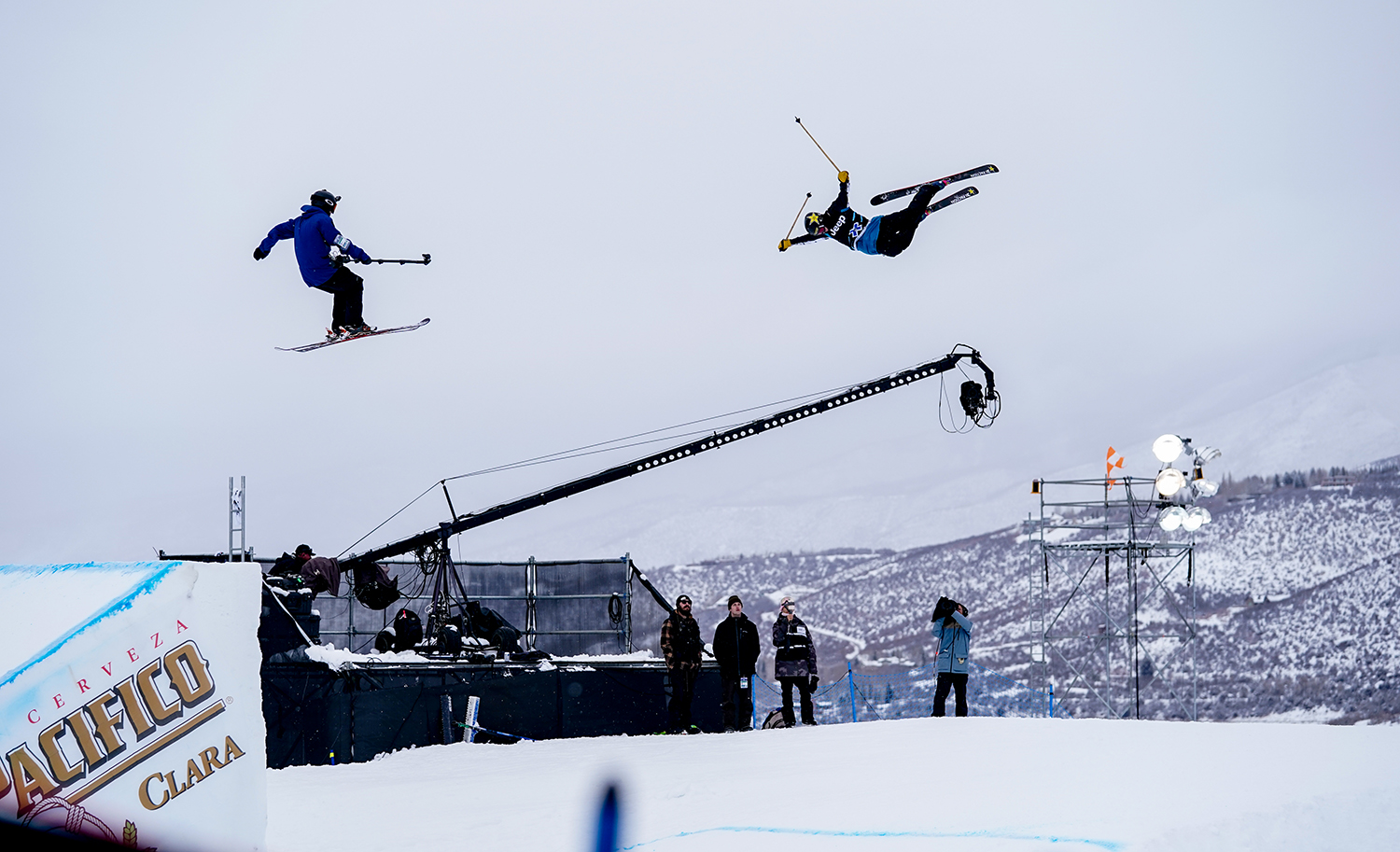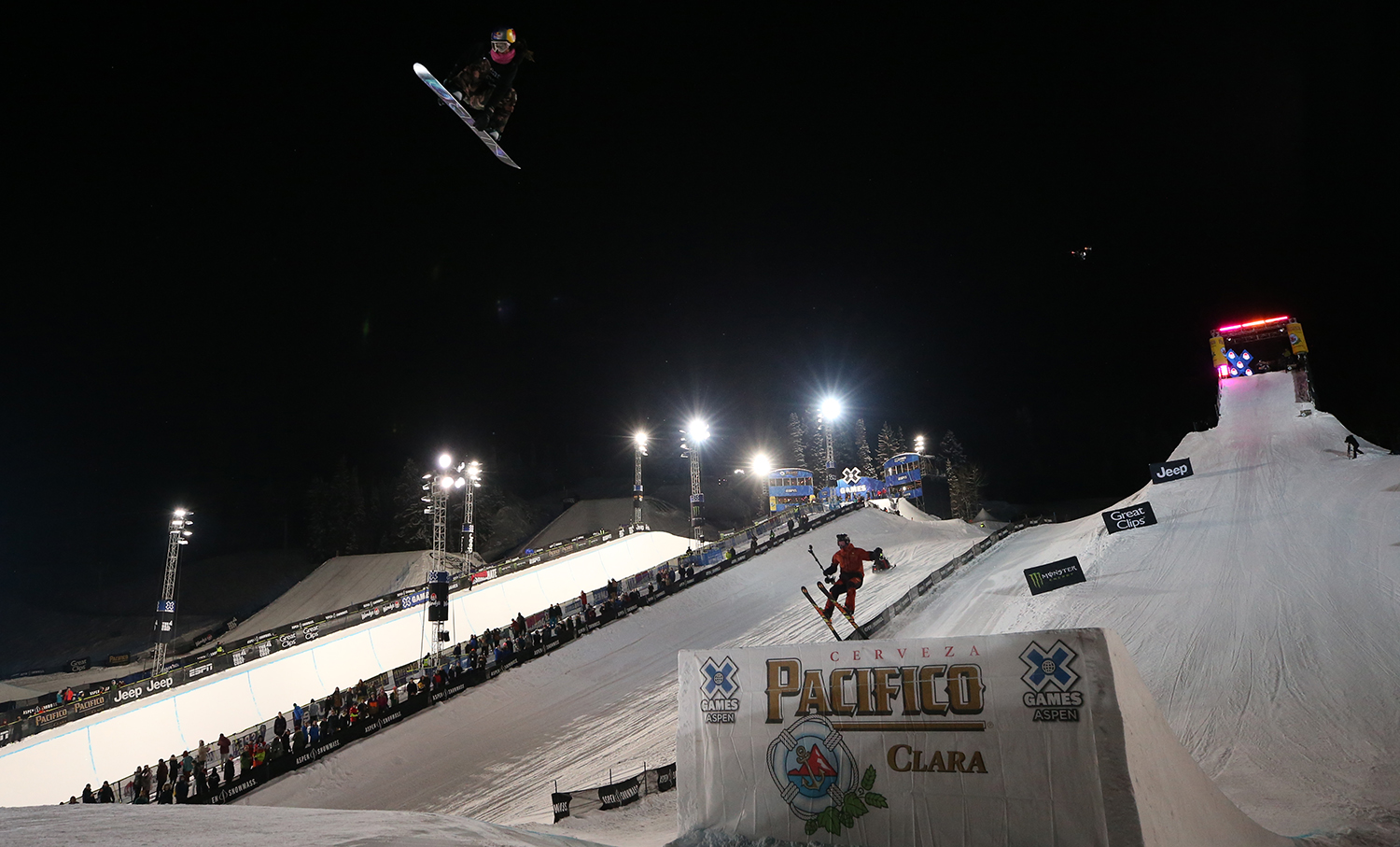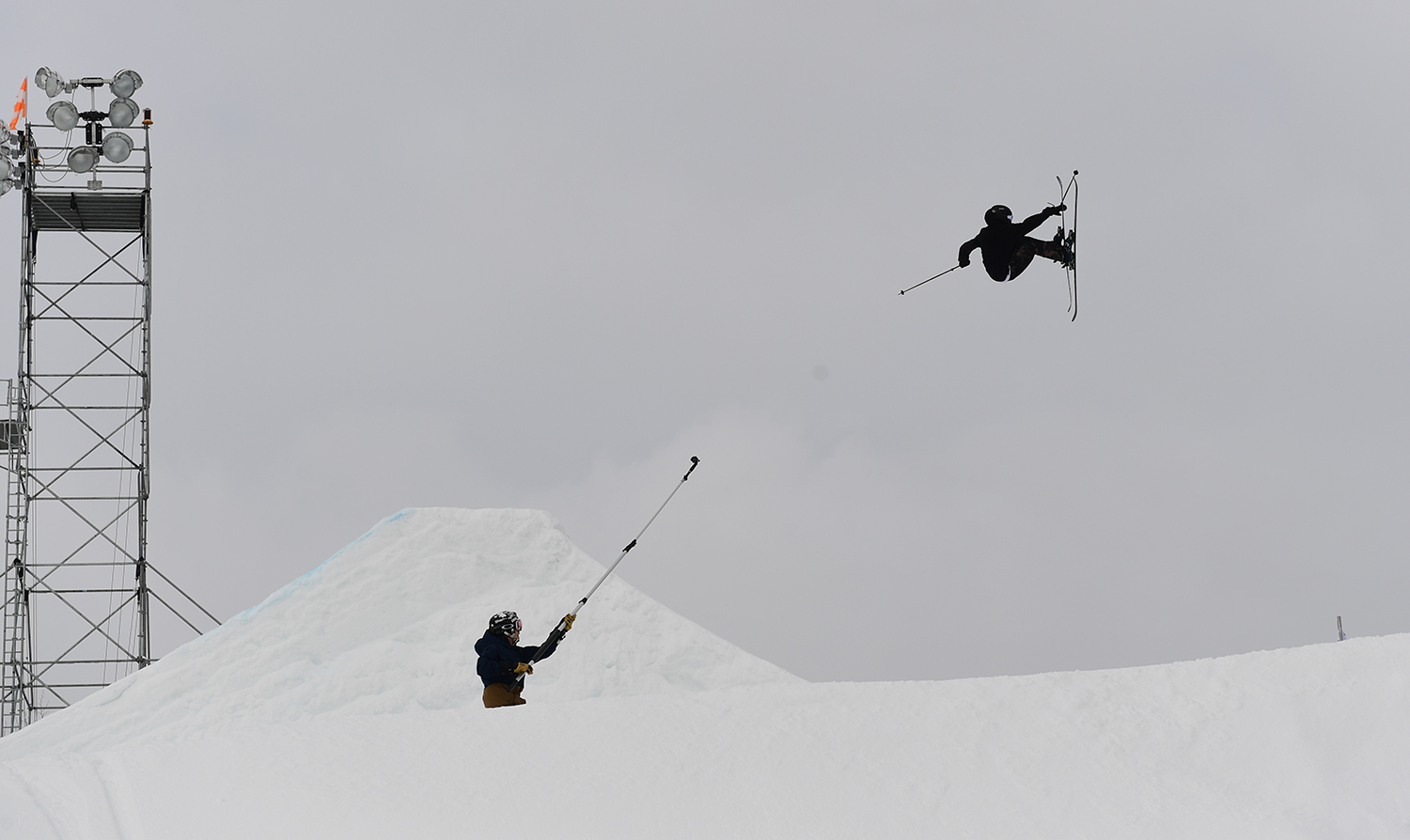X Games Aspen 2020: ESPN Brings Fans Closer Than Ever With High-Speed Drone Camera
Other production highlights include RED UHD camera and CondorCam
Story Highlights
Throughout the two-plus decades that ESPN has been producing X Games, one of its primary missions has been to bring fans as close to the action as possible with some of the most unique angles in all of live sports production. That tradition continues this week at X Games Aspen 2020, where ESPN and production partner Echo Entertainment have deployed a new high-speed drone to provide a new perspective to viewers.

Buttermilk Mountain is once again the venue for X Games Aspen 2020. Photo: Eric Lars Bakke/ESPN Images
“I think [deploying the drone] lives up to what we’re trying to do at X Games, which is push innovation, push technology, and deliver an idea of ‘what’s next’ to our fans,” says ESPN VP, X Games, Tim Reed. “From an industry perspective, drones have become a pretty standard filming tool for snowboarding and skiing. So we’re really excited to be able to bring that into a live setting at X Games.”
Drone Captures One-of-a-Kind Aerials
The DJI Inspire 2 drone system features a Zenmuse X7 4K camera and 360-degree rotating gimbal and is capable of hitting speeds of up to 58 mph. In addition, a dual-battery system prolongs the flight time, and self-heating technology allows it to fly even in colder climates like Aspen.
ESPN first deployed a drone in Aspen in 2015 (prior to Echo’s involvement), but drone technology and production techniques have come a long way over the past half decade. This will mark the most extensive use of a drone ever for X Games coverage.
“I think it will improve our race coverage on Snow BikeCross and Snowmobile Freestyle and get us above the action so we can see where everybody is on the course better than we’ve ever been able to,” says Hugh Arian, president, Echo Entertainment. “It will also give us some great supplemental coverage on Slopestyle and Big Air [ski/snowboard disciplines] and a look at [snowboard] SuperPipe that we’ve never had before from just outside the [half-pipe] deck and flying down the whole length of the pipe. We also plan to use it a lot as a real-time replays to look back at an athlete’s run from a perspective that has never been seen before.”
In addition to the logistical challenge of avoiding flying over crowds at the event, Buttermilk Mountain’s close proximity to Aspen Pitkin County Airport (just a mile away) added additional regulatory hurdles.
“We’re very close to the airport, so that took us a couple of years to work through [regulatory challenges]. And the tower at Aspen airport closes early, so we have a limit on how late at night we can fly it,” says Pierce Williams, technical producer, Echo Entertainment. “Like most new technologies, you have to walk before you can run, so that’s how we’re approaching it. We’re trying to work around those challenges and, hopefully, learning and will continue to work with the FAA and the airport so that we can continue to do it better in the future.”
Roving Host Set Gets Cinematic Treatment
Last summer in Minneapolis, ESPN and Echo opted not to erect a traditional set onsite for host and talent. They have continued this strategy in Aspen, moving host Jack Mitrani throughout Buttermilk to produce live segments from a variety of locations.

Host Jack Mitrani roams Buttermilk Mountain doing hits during X Games Aspen 2020. Photo: Eric Lars Bakke/ESPN Images
“We want to make his hits more immersive, so we will have Jack walking through the crowd and amongst the people,” says Arian. “We’ll also pull the curtain back for people, as we started in Minneapolis, doing a couple hits in the athlete lounge, in VIP areas, and other behind-the-scenes places.”
ESPN and Echo are also looking to add a more epic, cinematic feel to these live host segments by shooting them with a RED Digital Cinema UHD camera attached to a Freefly MōVI handheld three-axis gimbal.
“We feel like the RED camera gives us a more cinematic look and the MōVI mount gives us a lot of freedom to move smoothly,” says Arian. “That’s more of a cinema tool, but we have [adapted] it to be a live camera, and we’re bringing that back to the truck. That has been a challenge. It won’t match exactly to the rest of the show, but it has gone well so far, and we’re feeling good about what it adds to the show.”
Capturing the Epic Speed — and Danger — of Winter X
Besides the DJI Inspire 2 drone and RED UHD camera, ESPN and Echo have deployed a typically robust complement of cameras at Buttermilk: 30-plus cameras that will be repositioned to more than 130 locations throughout the four-day event.

Alex Hall competes in the Men’s Ski Big Air as a FollowCam operator trails him off the jump. Photo: Matt Morning/ESPN Images
They include four Sony HDC-4300 high-speed cameras (at varying frame rates up to 8x slo-mo). The Antelope Pico miniature slo-mo camera, which records up to 350 frames per second in native HD and simultaneously supplies a 1080i50/60 signal via HD SDI for line-cut purposes, has been deployed on a PoleCam rig at vantage points where larger cameras cannot be mounted.
In addition to plenty of high-speed cameras, ESPN and Echo are focused on capturing the speed of competition this year. After debuting at X Games in 2017, the CondorCam two-point aerial tracking system is now a staple of ESPN’s Slopestyle-course coverage. Eight small FollowCam systems, which have also become synonymous with X Games coverage, are attached to engineered rigs and used by operators on skis and snowboards; they are also attached to snowmobiles and snow bikes to provide dynamic tracking shots of the athletes.
“From an overall coverage perspective,” says Arian, “we’re making an effort to use more of our moving cameras that show the speed and, therefore, the danger of what all these athletes do. I’ve urged the directors to push the envelope in terms of using the FollowCams on Big Air and SlopeStyle. Then, we have CondorCam on SlopeStyle again, and we’ll have the drone on SnowBike and other events. We just want to use more moving cameras to create a more realistic look of the speed of these events.”
In addition to the RF FollowCams, BSI is supplying more than a dozen RF handheld cameras, several of which are POV cameras capable of capturing unique angles. BSI is also providing three proprietary helmet-camera systems, which are primarily deployed on athletes in the Snowmobile Freestyle, Snow BikeCross, and Snow Bike Best Trick disciplines. Two robotic cameras have also been positioned throughout the courses.
On the audio side, X Games Aspen will be telecast in discrete 5.1 surround sound and feature nearly 200 individual microphones (including 25 BSI wireless mics) — all interconnected through a variety of transport mediums, including Andiamo MADI and Calrec Hydra.
Dome Productions, BSI Back in the Compound
In the production compound, ESPN and Echo have brought back Dome Productions trucks for a fourth consecutive year. Silver, Journey, and Echo mobile units are covering two separate venues apiece, while Dome’s Expando B houses ESPN Event Productions, the roving host-show production, all comms, and three international partners. BSI is also on hand with its control-center truck to manage all RF cameras, comms, and microphones.

FollowCam operator is there as Yuto Totsuko competes in Men’s Snowboard Slopestyle. Photo: Gabriel Christus/ESPN Images
In 2018, Buttermilk Mountain installed permanent fiber going to four pedestals. All 792 single-mode ST fiber terminates in the TV compound. On top of the installed fiber, ESPN and Echo have pulled an additional 1,000,000 ft. of ST single-mode fiber and nearly 50,000 ft. of SMPTE cable (it took a 10-person crew more than a week to pull and test all the cable).
ESPN is distributing four feeds from the compound via redundant satellite uplinks/fiber circuits: the domestic feed for ABC, ESPN, and their social platforms; a dirty world feed; a clean world feed; and another clean world feed but with ESPN announcers for English-speaking countries.

A FollowCam operator on skis follows Miyabi Onitsuka in the Women’s Snowboard Big Air. Photo: Gabriel Christus/ESPN Images
X Games communications are always extremely complex, give the vast size of course on Buttermilk Mountain. Echo and ESPN have trunked three systems together via MADI to connect all five TV trucks’ RTS frames, as well as the in-house comms system. With more than 100 unique users in the comms pick sheet, the technical crew can decide whom they want to communicate with. The production team uses a trunked repeater system with 14 repeaters. The system also features 95 radio channels supporting the different groups onsite. More than 1,200 radios and 800 speaker mics are used throughout the venue.
“Echo Entertainment has been in the action-sports industry for a long time, but this is definitely our Super Bowl, says Williams. “In the compound and all over the mountain, the team is absolutely awesome, and it’s an honor for all of us to be able to do X Games each year.”

